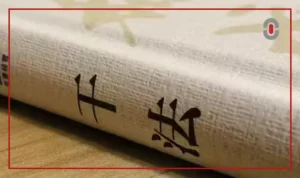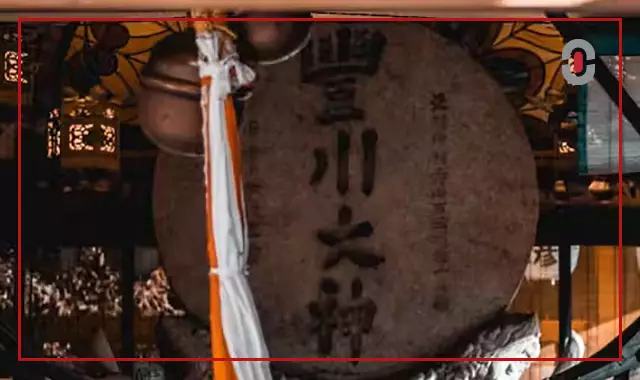AI Overview
| Category | Summary |
| Topic | Advanced Japanese Technical Translation for Automotive and Engineering Documents |
| Purpose | To explain why Japanese technical documentation requires specialized translation and how 1-Stop Asia ensures accuracy, safety, and compliance. |
| Key Insight | Japanese technical translation goes beyond language—it requires engineering expertise. A mistranslation in torque values, blueprints, or safety manuals can cause recalls, production errors, and safety risks. |
| Best Use Case | Automotive and engineering companies that need precise translations of manuals, blueprints, CAD documents, and safety protocols for global teams |
| Risk Warning | Poorly translated technical documentation can cause compliance failures, safety incidents, and millions in financial losses due to production stoppages or recalls. |
| Pro Tip | Work with translator-engineer teams who understand both the language and the mechanics behind the documentation to achieve zero-loss translations. |
Why Japanese Technical Documentation Translation Is Uniquely Challenging
In the global automotive and engineering industries, technical documentation is the backbone of product integrity, safety, and operational excellence. From assembly manuals to compliance specifications, every figure, instruction, and symbol carries weight.
When these materials originate in Japanese, the translation process becomes particularly complex. Japanese is a language of precision but also one of contextual interpretation. A single kanji character can hold multiple meanings depending on its technical setting. Compound terms often combine engineering jargon with culturally specific expressions, and misinterpreting them can alter the intent of an entire passage.
For companies working across international markets, Japanese technical translation is not simply a linguistic task—it is a safeguard against safety risks, regulatory delays, and costly production errors.
The Stakes – Accuracy Equals Safety and Reliability
Technical fidelity in translation is critical because the consequences of mistakes are tangible and often severe.
Consider the following scenarios:
- Torque Specification Error: An automotive manuals translation error once led to confusion between Newton-meters (Nm) and pound-feet (lb-ft). In production, this small misstep could result in over-tightening or under-tightening bolts, jeopardizing vehicle safety and triggering recalls.
- Engineering Blueprint Misinterpretation: A mistranslation in engineering document localization can obscure dimensions or tolerances. For example, confusing “clearance” with “gap” may cause a part to be manufactured incorrectly, forcing rework or halting production lines.
- Safety Documentation Misunderstanding: If safety documentation translation fails to accurately convey hazard warnings, it can endanger workers on the factory floor or mislead technicians during critical repairs. A single ambiguous phrase could mean the difference between a safe procedure and a preventable accident.
In industries where downtime costs millions per day, and where regulatory violations damage reputations built over decades, the stakes of mistranslation are simply too high to ignore.
Our Expertise – Translators Who Think Like Engineers
At 1-Stop Asia, we believe that translating Japanese technical content requires more than linguistic skill—it requires engineering intuition. Our translators are not generalists. Many have professional backgrounds and are familiar with terminology in mechanical engineering, automotive technology, or industrial safety. This dual expertise ensures they understand both the language and the mechanics behind it.
We rely on a proven methodology that combines technology with human expertise:
- Terminology Glossaries and Style Guides: Custom-built glossaries ensure consistent use of technical terms across thousands of pages. For example, “点検” (tenken) may be translated as “inspection” in a service manual but requires “checkup” in a safety protocol. Without strict glossary management, inconsistencies can confuse technicians and auditors alike.
- CAT Tools and Translation Memories: By leveraging advanced Computer-Assisted Translation tools, we streamline repetitive segments in large-scale projects. This not only saves time but ensures that terminology remains uniform across entire fleets of manuals or engineering documents.
- Rigorous QA Workflows: Every translation undergoes a multi-step review by both linguists and engineers. A wiring diagram description, for instance, is double-checked against the original schematic to confirm that no step has been lost in adaptation.
- Industry-Specific Expertise: Many of our Japanese technical translators have direct experience working with automotive and engineering documentation. Combined with our ISO-certified QA processes, this ensures that specialized terminology—such as hybrid vehicle components or advanced safety systems—is handled with full accuracy. When required, we also consult external subject-matter experts to validate critical terminology and ensure compliance with international standards.
This hybrid model guarantees technical fidelity in translation—a faithful, functional, and risk-free adaptation of the original Japanese source.
Use Cases – Where Accuracy Matters Most
Automotive Manuals Translation
Every OEM and Tier-1 supplier produces vast libraries of manuals: assembly guides, maintenance procedures, and service documentation. A mistranslation in these materials could mean improper repairs, dissatisfied customers, or liability claims. By providing automotive manuals translation, we ensure that service technicians worldwide follow procedures that are just as safe and precise as those written in Japan.
Example: A major OEM client needed 5,000+ pages of EV service manuals translated from Japanese to English. By using CAT tools, we preserved terminology consistency across all models, avoiding costly confusion over battery safety instructions.
Engineering Document Localization
Blueprints, CAD annotations, and prototype test results often require rapid localization so global R&D teams can collaborate effectively. Translators must understand tolerances, materials, and technical symbols.
Example: An engineering firm testing brake systems needed fast localization of Japanese test reports for its European design center. We deployed a translator-engineer duo who ensured every pressure rating and unit conversion was correctly adapted, preventing misalignment between test teams.
Safety Documentation Translation
 Safety manuals and hazard communication sheets must comply with strict international standards. Even slight ambiguity in safety instructions can trigger compliance failures.
Safety manuals and hazard communication sheets must comply with strict international standards. Even slight ambiguity in safety instructions can trigger compliance failures.
Example: For a Tier-1 supplier of airbags, we translated Japanese regulatory safety documents into multiple European languages. Terminology had to match EU regulatory standards exactly, as auditors cross-checked every detail. The zero-defect translation allowed for smooth regulatory approval across several markets.
Benefits – Why Clients Choose 1-Stop Asia
Companies choose us not only for accurate translation but also for the strategic advantages it provides.
- Consistency Across Documentation – Our terminology databases guarantee that once a component or process is defined, it stays consistent across manuals, training guides, and engineering notes.
- Accuracy Without Compromise – Zero-loss translations protect against warranty claims, recalls, and production stoppages.
- Regulatory Compliance – Our expertise ensures translated documents meet ISO, SAE, and regional safety standards.
- Reduced Costs Through Risk Mitigation – By avoiding misunderstandings, rework, and compliance failures, clients save millions in potential losses.
- Scalability and Speed – With robust project management, we handle high-volume projects without sacrificing quality, ensuring global product launches stay on schedule.
Ultimately, our clients gain peace of mind: their Japanese technical documentation is as precise, reliable, and trustworthy as the engineering it supports.
Conclusion – Why 1-Stop Asia Is Your Trusted Partner
In the automotive and engineering sectors, precision is non-negotiable. Technical documentation underpins everything from safety to compliance to production schedules. A poorly translated sentence can have consequences as significant as a faulty part.
At 1-Stop Asia, we specialize in Japanese technical translation that goes beyond words on a page. Whether it’s automotive manuals translation, engineering document localization, or safety documentation translation, we deliver zero-loss translations that preserve the integrity of your work.
With our engineer-linguist teams, rigorous QA processes, and commitment to technical fidelity in translation, we help OEMs, Tier-1 suppliers, and R&D centers eliminate risks and operate with confidence.
Choose 1-Stop Asia as your trusted partner—and ensure your technical documentation is as flawless as the vehicles and systems it describes.
